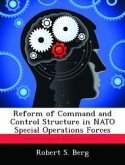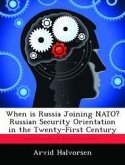Sixty years after twelve nations pledged themselves to collective defense in the North Atlantic Treaty, an attack on one member state resulted in the formation and deployment of a response from the alliance. This was not, as envisioned, an attack by the Soviet Union on Western Europe, but a terrorist attack on the United States. The International Security Assistance Force (ISAF) was sent to Afghanistan in December, 2001, and now has the lead for military actions. This coalition includes special operations forces (SOF) from several nations, but their effectiveness is hampered by the lack of dedicated special operations aviation assets. The recent expansion from three SOF units to ten has only exacerbated the situation. To address this deficiency, this paper analyzes three courses of action: NATO can maintain the status quo, it can establish a permanent SOF air wing, or it can adopt a #65533;modular#65533; concept of a centralized command and control structure augmented by affiliated air and ground SOF units comprised and based by member nations.








